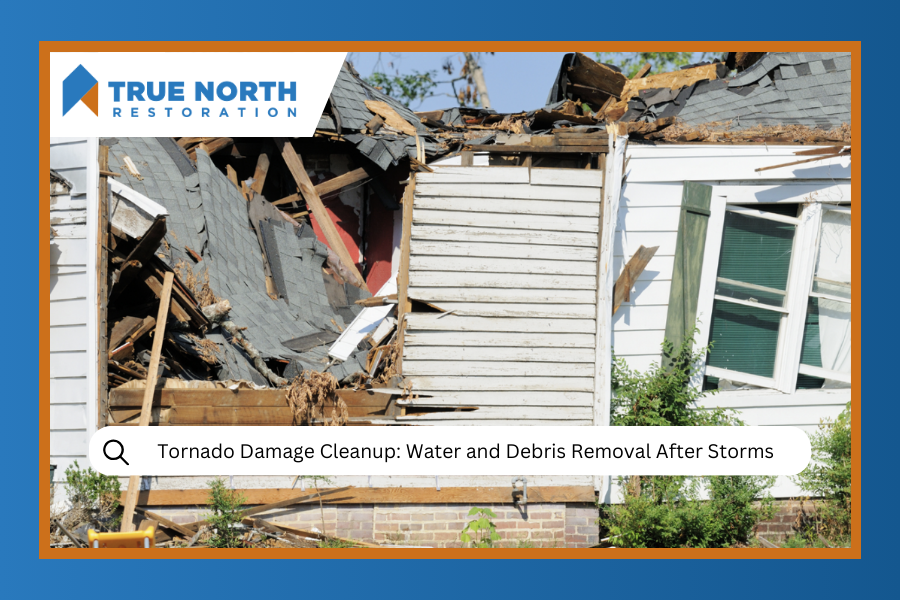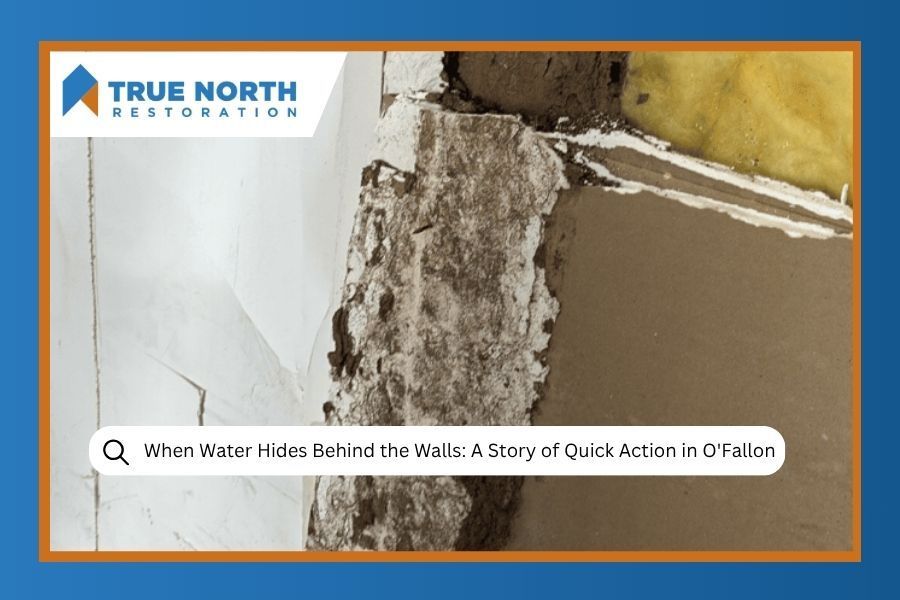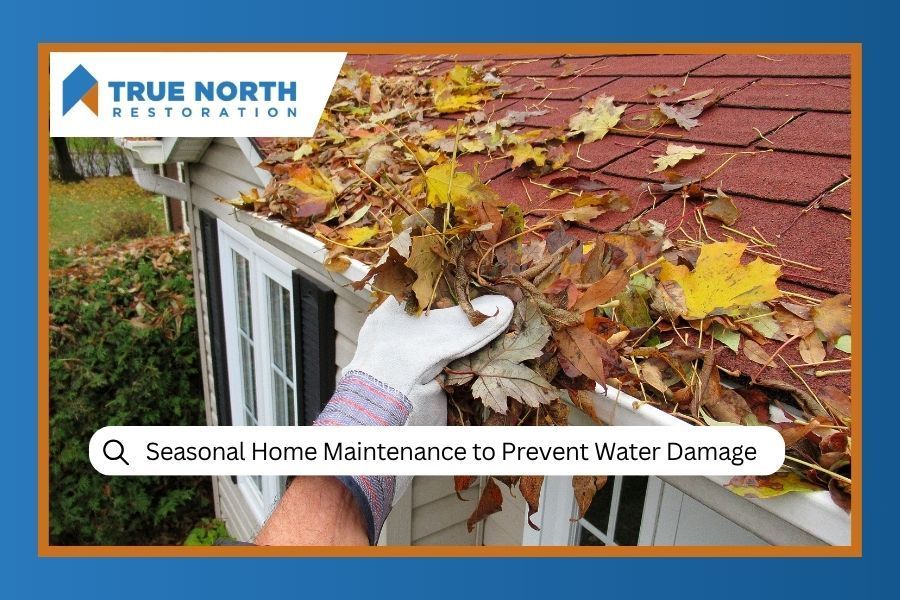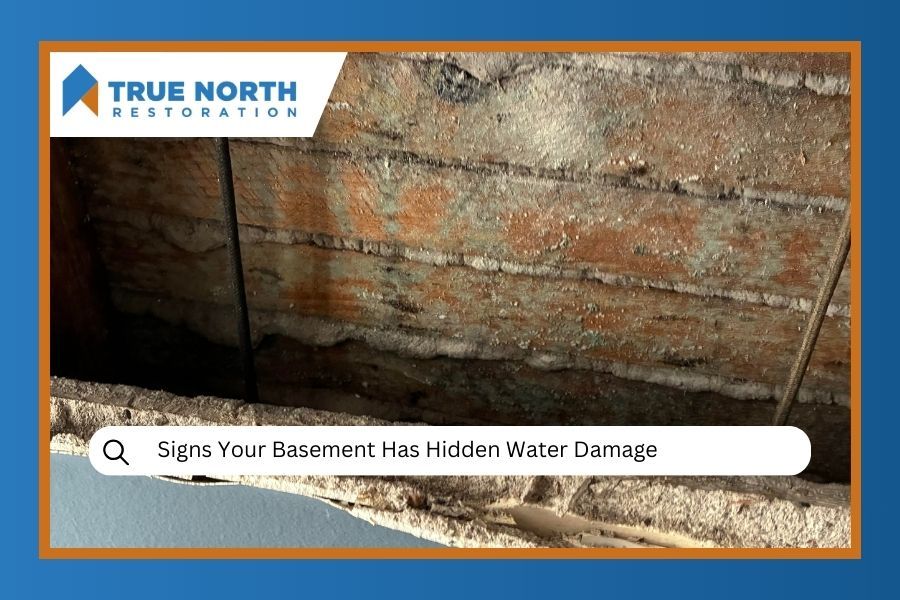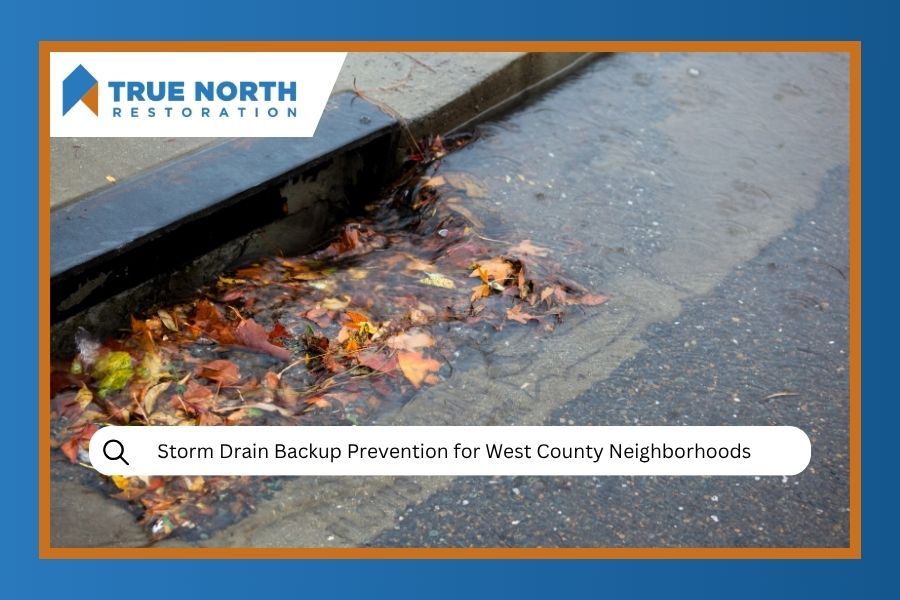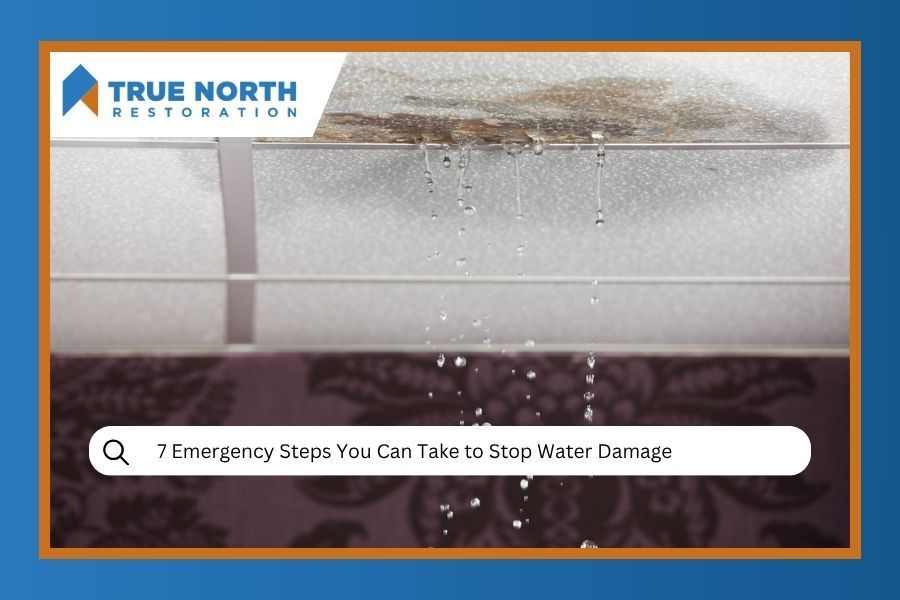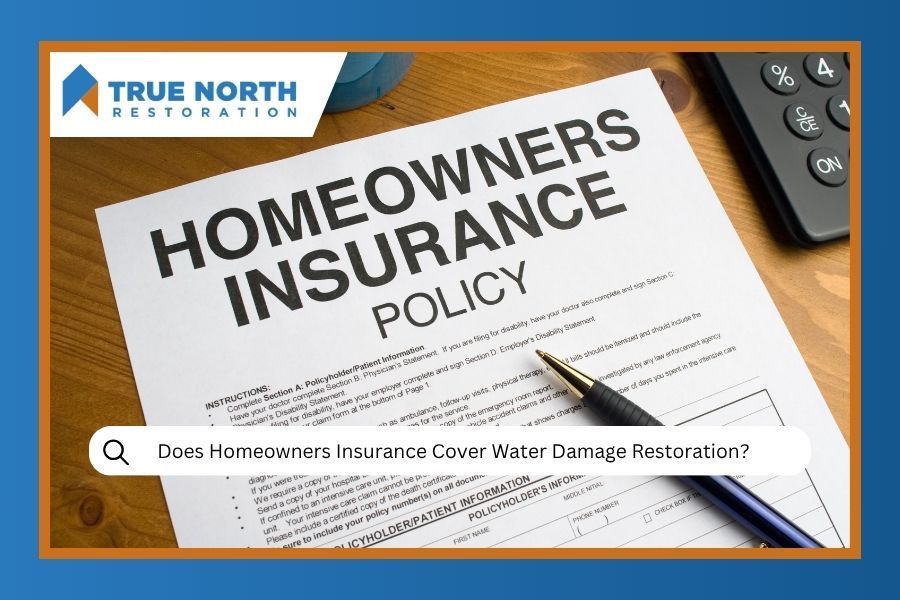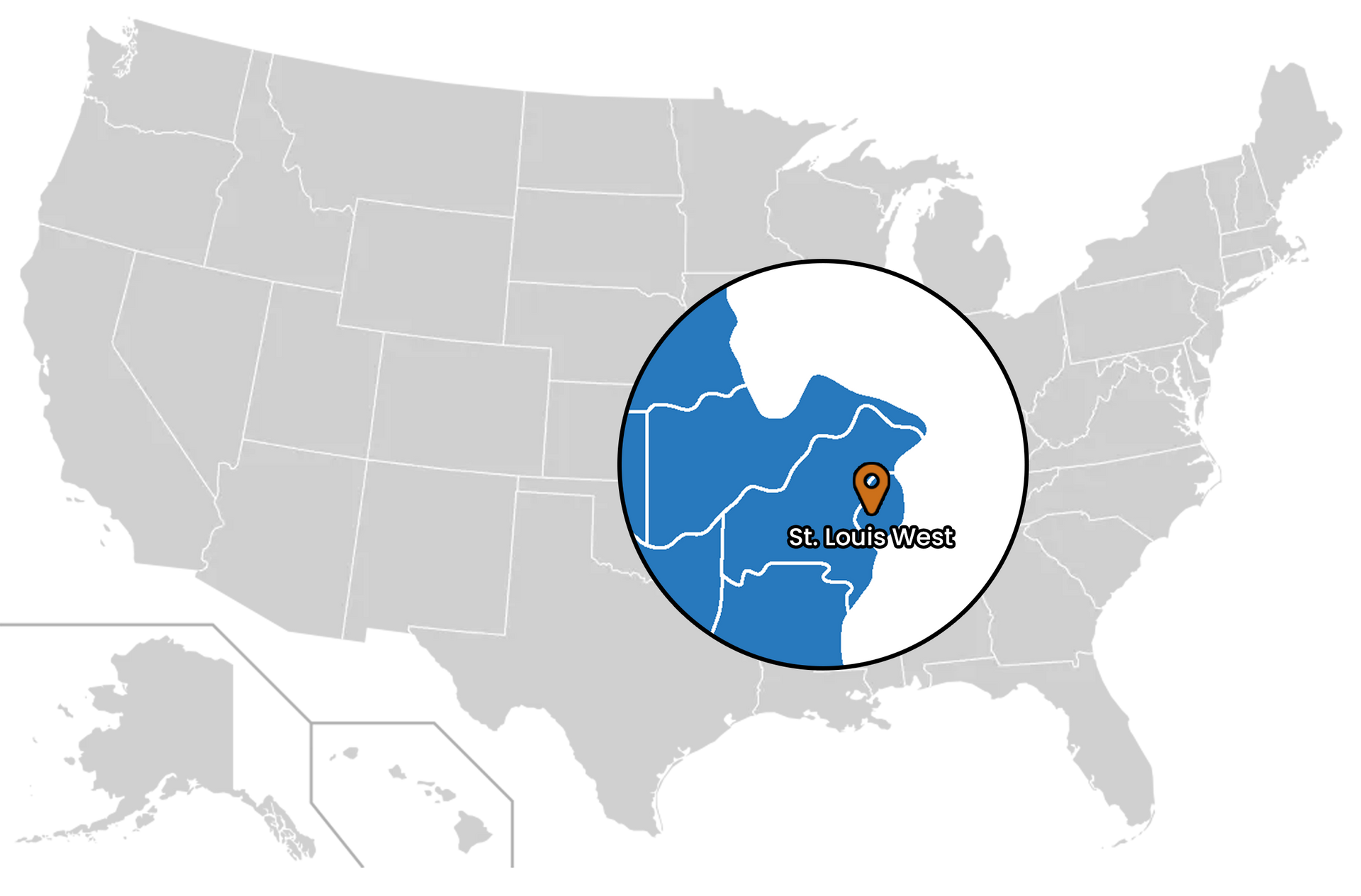Jump to Section:
- Why Tornadoes Hit Our Area Hard
- The First 24 Hours
- Water Damage: The Hidden Enemy
- Professional Water Extraction
- Debris Removal
- The Restoration Process
- Professional vs. DIY Cleanup
- Insurance Claims
- Storm Damage Prevention
- Tornado Cleanup Checklist
- Common Mistakes
- Why Choose IICRC-Certified Professionals
Fall storm season in Missouri can be intense. One minute you're enjoying a peaceful evening, the next you're dealing with the aftermath of severe weather that's left your home looking like it went through a blender. If a tornado has damaged your property, you're probably feeling overwhelmed, and that's completely normal.
We've seen it all here in Chesterfield and West County communities. From minor roof damage to major flooding, our team at True North Restoration of Greater St. Louis West has helped countless families get back on their feet after severe weather strikes. Our certified water damage restoration services are available 24/7 because Mother Nature doesn't follow a schedule.
Here's what you need to know about tornado cleanup, what to expect, and how to protect your family while getting your home back to normal.
Why Tornadoes Hit St. Charles County and West County Hard
Living in Missouri means tornado season is part of life. Our area sits in a zone where warm, moist air from the Gulf meets cooler, drier air from the north, creating perfect conditions for severe weather. Most properties around here have basements, which is great for shelter but can spell trouble when storm water finds its way inside.
The geography of St. Charles County and West County also means we get hit with:
- Heavy rain that overwhelms storm drains
- Hail that damages roofs and siding
- High winds that tear off shingles and knock down trees
- Flash flooding from overwhelmed creeks and rivers
When these forces combine during tornado season, the cleanup can be massive. Professional restoration requires proper safety protocols, which is why our team follows OSHA's safety guidelines for water damage cleanup to protect both our workers and your family.
The First 24 Hours: Immediate Safety and Assessment
Safety First, Always
Before you even think about cleanup, make sure everyone is safe. Check for:
- Gas leaks (if you smell gas, leave immediately)
- Electrical hazards from downed power lines
- Structural damage that could cause collapse
- Contaminated water that could make you sick
Never enter a building if you're unsure about its structural integrity. When in doubt, wait for professionals.
Document Everything for Insurance
Once it's safe, start taking photos and videos of all damage. Your insurance company will need detailed documentation, and the more evidence you have, the smoother the claims process will be. Take pictures of:
- Water damage and flooding
- Structural damage to walls, roof, and foundation
- Damaged belongings and furniture
- Any temporary repairs you make
Trust us, you'll thank yourself later for being thorough with documentation.
Water Damage: The Hidden Enemy After Tornado Damage
Here's something many people don't realize: water damage from storms can be more destructive than the initial tornado itself. Standing water doesn't just sit there looking ugly, it seeps into everything, creating the perfect environment for mold growth and structural problems. Understanding the most common causes of water damage can help you recognize the warning signs early.
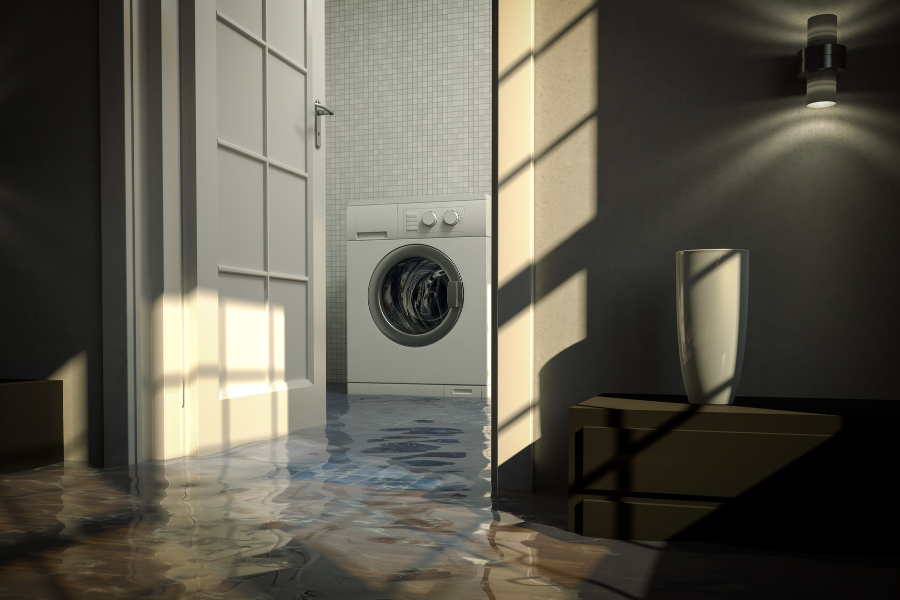
Appliance failures and plumbing damage from tornado impact can cause extensive flooding throughout your home, requiring immediate professional water extraction.
Types of Storm Water Contamination
Not all water is created equal. The water flooding your home after a tornado falls into different categories:
Category 1 (Clean Water): This comes from broken pipes, roof leaks, or rainwater. It's the "cleanest" type but can still cause serious damage if not addressed quickly.
Category 2 (Gray Water): This is slightly contaminated and might come from washing machine overflows, dishwasher leaks, or toilet overflows (without feces). It can cause illness if you're exposed to it.
Category 3 (Black Water): This is seriously contaminated water from sewage backups, river flooding, or any water that's been sitting stagnant for more than 48 hours. According to the EPA's flooding cleanup guidelines , this stuff is dangerous and requires professional cleanup.
Most tornado flooding involves Category 2 or 3 water, which means you need professional help to safely clean it up. If you suspect mold growth after water damage, our mold remediation services can safely address contamination and restore healthy indoor air quality.
Emergency Tornado Cleanup Needed?
Don't wait for water damage to get worse. Our certified team responds within 45 minutes and works directly with your insurance company to make the process as smooth as possible.
Get Emergency Help NowProfessional Water Extraction and Drying Process
When our certified team arrives at your property, we don't mess around. Speed is everything when it comes to water damage, and we've got the equipment and experience to get your home dried out fast.
Step 1: Emergency Water Removal
First things first, we get the standing water out. Our truck-mounted extraction units can remove thousands of gallons of water quickly, which is crucial for preventing further damage. The longer water sits, the more it soaks into floors, walls, and structural materials.
Step 2: Moisture Detection and Mapping
We use advanced moisture detection equipment to find hidden water damage. Water has a sneaky way of traveling behind walls, under floors, and into places you can't see. Our IICRC-certified technicians map out all the affected areas so nothing gets missed.
Step 3: Structural Drying
This is where the science comes in. We strategically place industrial-grade dehumidifiers and air movers throughout your home to create optimal drying conditions. It's not just about moving air around, it's about creating the right temperature, humidity, and airflow to dry materials from the inside out.
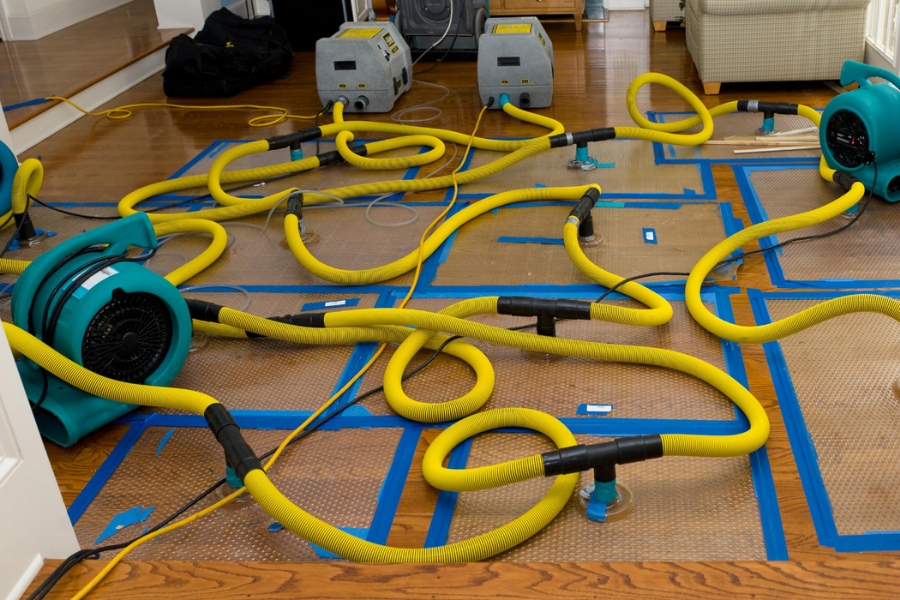
Professional-grade dehumidifiers and air movers are strategically placed to create optimal drying conditions and prevent long-term structural damage and mold growth.
Debris Removal: More Than Just Picking Up Sticks
Tornado cleanup involves way more than just hauling away tree branches (though we do that too). Storm debris can include:
Exterior Debris
- Fallen trees and large branches
- Roof materials like shingles, gutters, and fascia boards
- Siding, fencing, and outdoor furniture
- Broken glass and twisted metal
Interior Debris
- Water-damaged drywall and insulation
- Contaminated carpeting and padding
- Damaged furniture and belongings
- Appliances that got flooded
Safety note: Never try to remove large debris yourself, especially anything touching power lines. Leave that to the professionals who have the proper equipment and training.
Tornado Cleanup Timeline: What to Expect
Days 1-2: Emergency Response
Water extraction, safety assessment, emergency board-up, and initial debris removal
Days 3-7: Stabilization
Structural drying, mold prevention treatment, and content pack-out if needed
Week 2-3: Deep Cleaning
Complete cleaning of salvageable items and antimicrobial treatment
Week 4+: Reconstruction
Rebuilding damaged structures and final restoration work
The Restoration Process: Getting Your Life Back
Week 1: Stabilization
- Water extraction and emergency board-up
- Debris removal and cleanup
- Initial mold prevention treatment
- Temporary repairs to prevent further damage
Week 2-3: Deep Cleaning and Drying
- Complete structural drying
- Deep cleaning of salvageable items
- Antimicrobial treatment to prevent mold
- Content pack-out and storage if needed
Week 4+: Reconstruction
- Rebuilding damaged structures
- Installing new flooring, drywall, and fixtures
- Final cleanup and move-in preparation
The timeline can vary depending on the extent of damage, but we keep you informed every step of the way.
When to Call Professionals vs. DIY Cleanup
Look, we get it. After a disaster, you want to jump in and start fixing things yourself. Sometimes that's fine, but here's when you absolutely need professional help:
Call the pros when:
- There's any standing water over 2 inches deep
- You suspect contaminated water (sewage, chemicals, etc.)
- There's structural damage to walls, ceiling, or foundation
- You can smell mold or see visible mold growth
- Electrical systems got wet
- The damage covers more than 10 square feet
You might handle it yourself if:
- It's minor roof leak damage that's been contained
- Only a small area got wet and you can dry it within 24-48 hours
- There's no contamination and no structural damage
But honestly? When it comes to tornado damage, it's usually more complex than it first appears. What looks like a simple cleanup often reveals hidden damage that needs professional attention.
Insurance Claims: Making the Process Smoother
Here's the deal with insurance claims: documentation is everything, and timing matters. Most policies require you to report damage within a certain timeframe, so don't delay.
What Your Insurance Typically Covers
- Structural repairs from wind and hail damage
- Water damage from storm-related flooding (if you have the right coverage)
- Debris removal from your property
- Temporary living expenses if your home is uninhabitable
What It Usually Doesn't Cover
- Flooding from external sources (you need separate flood insurance)
- Damage from lack of maintenance
- Cosmetic damage that doesn't affect function
We work directly with insurance companies and can help you navigate the claims process. Our detailed documentation and professional reports can make a huge difference in getting your claim approved quickly.
Storm Damage Prevention: Preparing for Next Time
Nobody wants to go through tornado cleanup twice, so let's talk about making your home more resilient:
Roof and Exterior Maintenance
- Keep gutters clean and properly attached
- Replace loose or damaged shingles promptly
- Trim trees that could fall on your house
- Secure outdoor furniture and decorations
Basement and Foundation Preparation
- Install a backup sump pump with battery power
- Seal cracks in foundation walls
- Keep important items elevated off basement floors
- Consider a whole-house surge protector
Emergency Planning
- Know where your main water shut-off valve is located
- Keep emergency supplies including flashlights, battery radio, and first aid kit
- Have a plan for where your family will go if evacuation is necessary
- Take photos of your home and belongings for insurance documentation
Tornado Cleanup Checklist: Your Action Plan
When tornado damage strikes, having a clear plan helps reduce stress and ensures nothing gets forgotten. Here's your step-by-step action plan:
| Timeframe | Action Items |
|---|---|
| First 24 Hours | • Ensure everyone's safety and account for all family members • Call 911 if there are any injuries or immediate dangers • Contact your insurance company to report the claim • Take photos and videos of all damage before touching anything • Cover broken windows or roof damage with tarps if safe to do so • Call True North Restoration for emergency water extraction |
| Week 1 | • Meet with insurance adjuster for damage assessment • Begin water extraction and drying process with professionals • Remove debris safely (or hire professionals for large debris) • Start cleaning and disinfecting salvageable belongings • Arrange temporary housing if home is uninhabitable |
| Ongoing | • Monitor drying progress and check for signs of mold • Keep detailed records of all expenses related to cleanup • Work with restoration professionals on reconstruction timeline • Begin replacing damaged belongings as insurance claim progresses |
Common Mistakes That Cost Time and Money
We've seen these mistakes happen over and over, and they can really set back your recovery:
Waiting too long to start cleanup. Mold can start growing within 24-48 hours of water damage, as we explained in our comprehensive water damage prevention tips guide. The longer you wait, the more expensive and complicated the cleanup becomes.
Trying to handle contaminated water yourself. Category 2 and 3 water contains bacteria, chemicals, and other nasties that can make you seriously ill. Don't risk your health - this type of cleanup requires professional fire and water damage restoration equipment and safety protocols.
Not documenting everything properly. Take photos before cleanup begins, during the process, and after completion. Your insurance company needs this documentation.
Poor-quality work often leads to bigger problems down the road. We've seen this happen countless times, including in our mold remediation case study in Collinsville , where initial cleanup was done incorrectly and led to extensive mold contamination.
Not addressing hidden moisture. Just because the surface looks dry doesn't mean moisture isn't lurking behind walls or under floors. We documented this exact problem in our recent emergency moisture cleanup case study , where hidden moisture led to extensive mold problems throughout multiple rooms.
Why Choose IICRC-Certified Professionals
When you're dealing with tornado damage, you need more than just someone with a shop vac and good intentions. IICRC certification means technicians have been trained in proper water damage restoration, mold remediation, and cleaning techniques.
Our certified team knows:
- How different materials react to water damage
- Proper drying techniques for various building materials
- Safe handling procedures for contaminated materials, following OSHA safety guidelines
- Industry standards for moisture levels and mold prevention
- How to work effectively with insurance companies
We're not just cleaning up water, we're restoring your home to a safe, healthy condition that will last for years to come. Whether you're in Chesterfield, St. Charles County, or surrounding West County communities, our local team understands the unique challenges that Missouri weather brings to area homes.
When Your World Heads South, Go True North
Tornado damage can turn your life upside down, but you don't have to handle it alone. Our team has been helping Chesterfield and West County families recover from storm damage with precision, care, and the integrity you deserve.
We respond 24/7 because disasters don't wait for business hours. When you call us, you're getting certified professionals who understand the urgency of the situation and have the equipment to handle it right the first time.
Remember, speed matters with water damage, but so does doing the job correctly. We combine fast response times with thorough, professional restoration services to get your home back to normal as quickly and safely as possible.
At True North Restoration of Greater St. Louis West , we understand that tornado damage can be overwhelming, but you don't have to face it alone.
Frequently Asked Questions
How quickly do I need to start cleanup after tornado damage?
You should begin water extraction and drying within 24-48 hours to prevent mold growth and minimize structural damage. However, safety comes first, so don't enter damaged buildings until they've been declared safe by professionals.
Will my homeowner's insurance cover tornado cleanup and restoration?
Most standard homeowner's insurance policies cover wind damage from tornadoes, including roof damage, broken windows, and storm-related water damage. However, flooding from external sources typically requires separate flood insurance. We recommend reviewing your policy and working with your insurance company immediately after damage occurs.
How long does the complete tornado cleanup and restoration process take?
The timeline varies significantly based on the extent of damage. Emergency water extraction and stabilization typically happen within the first few days. Complete drying can take 3-5 days, while full restoration and reconstruction can take several weeks to months for extensive damage. We provide detailed timelines after assessing your specific situation.
Can I stay in my home during the tornado cleanup process?
This depends on the extent of damage and safety concerns. Minor damage may allow you to stay in unaffected areas of your home, but significant water damage, structural issues, or mold contamination may require temporary relocation. We help coordinate with your insurance company for additional living expenses when necessary.
For immediate tornado cleanup assistance in Chesterfield, St. Charles County, and West County communities, contact True North Restoration of Greater St. Louis West at (314) 557-3990 or visit our contact page. We provide 24/7 emergency response with 45-minute response times, and our IICRC-certified professionals will help you navigate both the cleanup process and insurance claims to get your life back to normal.



